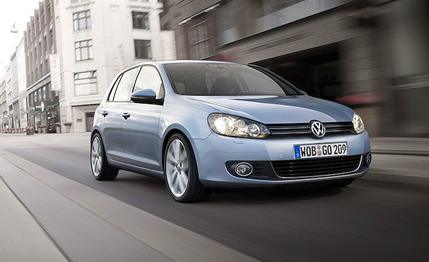
 Second Drive
Second Drive
For the past 30 years, the Volkswagen Golf has been the bestselling car in Europe. It has not had the same impact in the U.S., where the economics of making a small family car in Germany and selling it in the States simply don’t add up.
Now there is a new Golf in Europe—the sixth generation since the original took the place of the venerable Beetle as VW’s main model in 1974. The 210-hp GTI version will be sold in the U.S. later this year along with a standard model with the carry-over 170-hp, 2.5-liter five, but as this is written, it’s not known whether that model will continue to be called the Rabbit or revert back to Golf. Nor should North Americans expect an equivalent sedan, as the Jetta will be replaced in 2010 by a new model specifically tailored (read: cheapened) for the U.S. market and built in Mexico.
There is nothing cheap about the Golf VI. Indeed, the whole emphasis is on improved quality, refinement, and the provision of the kind of equipment previously available only in the upper car classes. VW says it has “brought Phaeton quality to the Golf,” a reference to its expensive luxury sedan that was withdrawn from the U.S. market due to lack of consumer interest rather than shortcomings in quality and presentation.
You see it in the Golf’s details: the tight, consistent shut-lines of body panels, the precision fit and finish of the dashboard components, plastic trim pieces that are polished rather than painted, cloth linings for the storage bins. The Golf V was criticized for its relatively poor interior, and VW admits there was some cost cutting inside to pay for its expensive independent-rear-suspension upgrade. To our eye, the Golf VI’s cabin furnishings even surpass those of the related but more expensive Audi A3.
The platform from the Golf V is carried over, independent rear suspension included, and the new car is more or less the same size and weight, with the exception of its 0.7-inch-wider stance.
The cars available to us at the driving launch were loaded with options, some nearly Phaeton-worthy: double-clutch DSG automated manual transmission, adaptive chassis control (which has three positions for shock stiffness and steering power assist), adaptive cruise control, parking assist, and navigation.
The adaptive suspension confuses the assessment of ride and handling somewhat, and we concluded that the “normal” setting worked just fine, providing the poise that we admire in the current GTI, with better steering feel.
There is a wide choice of engines, gasoline and diesel. The interesting one is the most powerful gas motor, the 1.4-liter TSI, which makes 158 horsepower, mostly because it has a direct-injection engine with both a turbocharger and a mechanical supercharger. Here, downsizing has no downside: The car is Lexus-quiet at idle, and its progressive power delivery gives no clue when it changes from one compressor to the other. It truly has the power of a two-liter but with potential fuel economy close to that of a naturally aspirated 1.4-liter.
The 1.4 TSI can be specified with VW’s new seven-speed dry-plate-clutch DSG. Like the six-speed wet-clutch system used in higher-torque engines, it works beautifully, both as a manual and an automatic. The Golf will no longer be offered with a conventional torque-converter automatic.
Some might not like the smooth, bland styling of this latest, improved Golf. The new VW management says that was intentional, that this is a Golf returning to its roots, best illustrated by Golfs I and IV. So there’s nothing radical, but at least it won’t be mistaken for anything else.